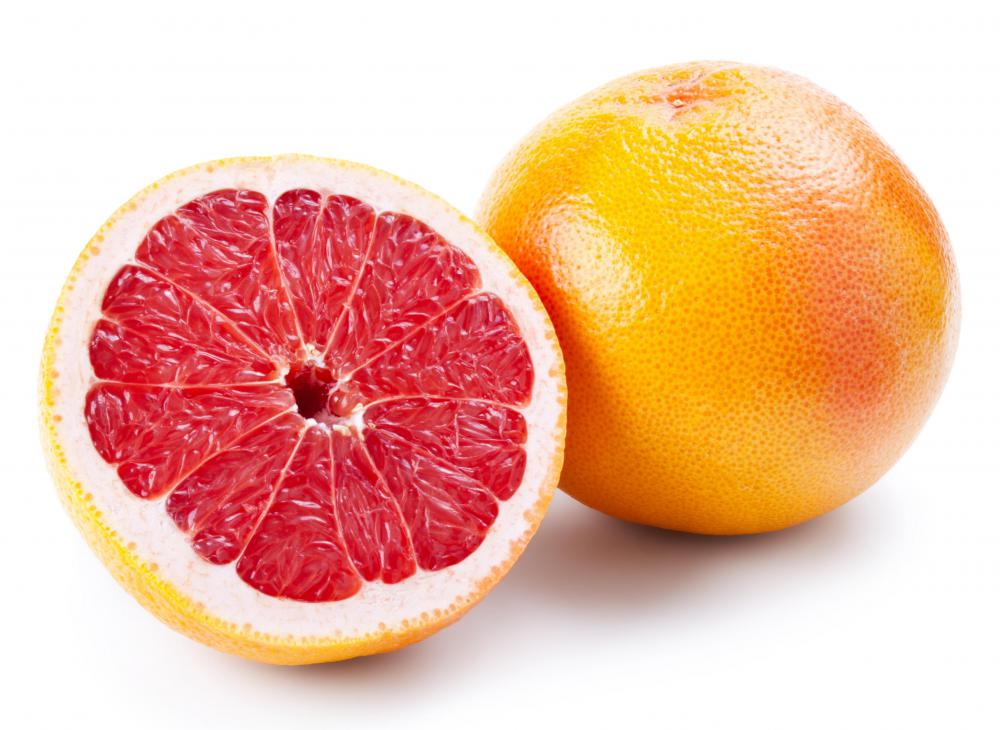At HomeQuestionsAnswered, we're committed to delivering accurate, trustworthy information. Our expert-authored content is rigorously fact-checked and sourced from credible authorities. Discover how we uphold the highest standards in providing you with reliable knowledge.
How Do I Care for a Navel Orange Tree?
Gardeners love to grow navel orange trees because they produce really juicy fruit that's quite delicious. To care for a navel orange tree, plant the tree in a location that receives a lot of direct sunlight daily, and protect it from temperature fluctuations. Plant trees in well-drained soil that contains mixed organic matter, and water them frequently when they are young. Choose a good location that gives the roots room to grow, fertilize them well, and allow the fruits to ripen naturally on the tree.
A navel orange tree is relatively hardy but still quite sensitive to temperature. Known to grow well in subtropical conditions, they can be severely affected by frost and even die. If the temperature gets too hot, spray the tree with water to keep it cool. Some gardeners prefer to put damp peat moss or pebbles at the base of the tree to help it stay cool. Frost can arrest plant growth and kill off the blossoms and fruit, so when facing very low temperatures, take special care of the navel orange tree.

To protect the tree from being affected by frost, place a fan near the tree to ensure good air circulation. This can help in preventing the frost from forming on the blossoms or oranges. Some gardeners prefer to cover their orange navel trees with blankets. If the temperature falls drastically for long periods, it can result in ice forming within the fruit, so it's a good idea to take proper precautions if the tree is grown outside of a tropical or subtropical region. Some gardeners prefer to plant the tree near a fence or building for added protection.

These trees require direct sunlight for good growth and optimum yield, so plant them in a location that receives abundant sunlight for a couple of hours a day. It's also important to plant the tree in a location that allows the roots to grow unhampered. Plant the tree at a site that is around 12 feet (3.6 meters) away from any structure. An orange navel tree is known to thrive when planted near a south-facing wall or near the south side of any type of structure.

Growing a navel orange tree in the soil type that is right for it also helps it produce an abundant crop. An orange navel tree grows well in well-drained soil into which organic matter has been added. Gardeners like to add bark chips, manure, and peat moss to the soil. Avoid soil that has a lot of clay in it or is too heavy. If planted in heavy soil or soil that lets water stand, the tree will not produce fruit well and may even die at an early age.
Caring for a navel orange tree also involves watering the tree well. Young trees need frequent watering. If they aren't watered in a timely fashion, it will adversely affect the fruit production. A few gardeners get around the need to personally water the plant if it's grown in a pot by placing a large, plastic bottle filled with water upside down near the navel orange tree. The soil absorbs the water whenever it needs it, and gardeners can easily refill the bottle when the water is low.
Water a mature navel orange tree around every other week. Fertilize it well with a cup of ammonium sulphate if it is under a year old. Older trees do well with one or two cups of fertilizer once a year that's spread out over multiple applications. Picking the fruit at the right time is also important as the fruit is sweeter if left to ripen longer on the tree.
AS FEATURED ON:
AS FEATURED ON:













Discussion Comments
I know what you mean about homegrown navel oranges Heavanet. I have a friend in Florida who sends me navel oranges that he grows in his orange grove. They are very sweet and rich in orange flavor. It's like getting a package of sunshine in the mail every time he sends them to me!
My aunt lives in Florida and has three navel orange trees in her yard. Not only are they beautiful and hardy, but the fruit they produce is fabulous.
Post your comments